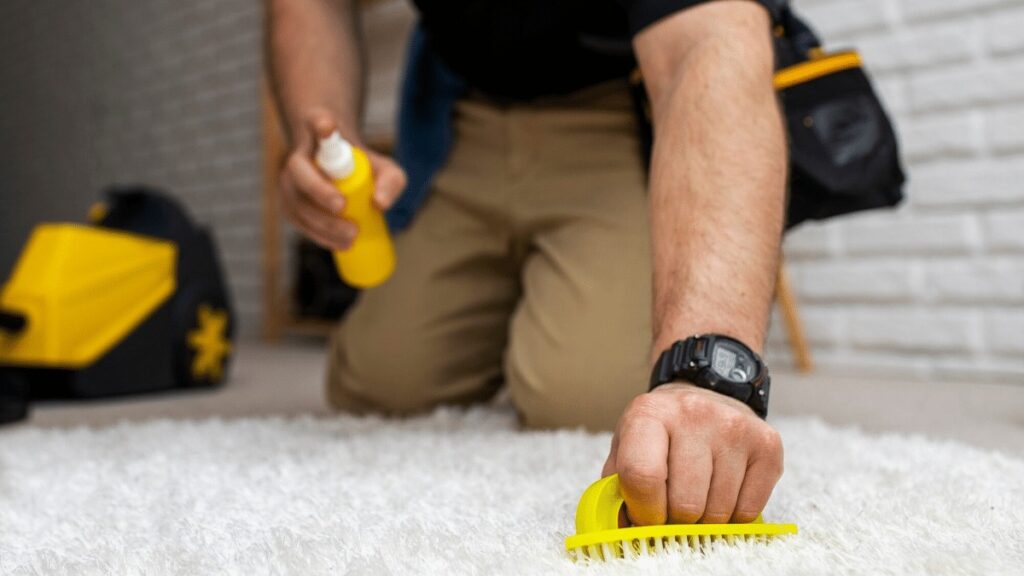Top Tips for Maintaining Your Bathroom Tile’s Shine and Durability
Bathroom tiles are more than just a practical surface—they add style, texture, and personality to your space. Whether you’ve chosen sleek porcelain, classic ceramic, or trendy natural stone, your bathroom tile can stay looking fresh and glossy for years—if you give it the right care. Without regular maintenance, tiles can lose their luster, collect grime, or even develop mold and mildew. But don’t worry! Keeping your bathroom tile looking beautiful doesn’t require harsh chemicals or professional services—just a few consistent habits and smart cleaning strategies.
Here are our top tips for maintaining the shine and durability of your bathroom tile.
- Clean Regularly and Gently
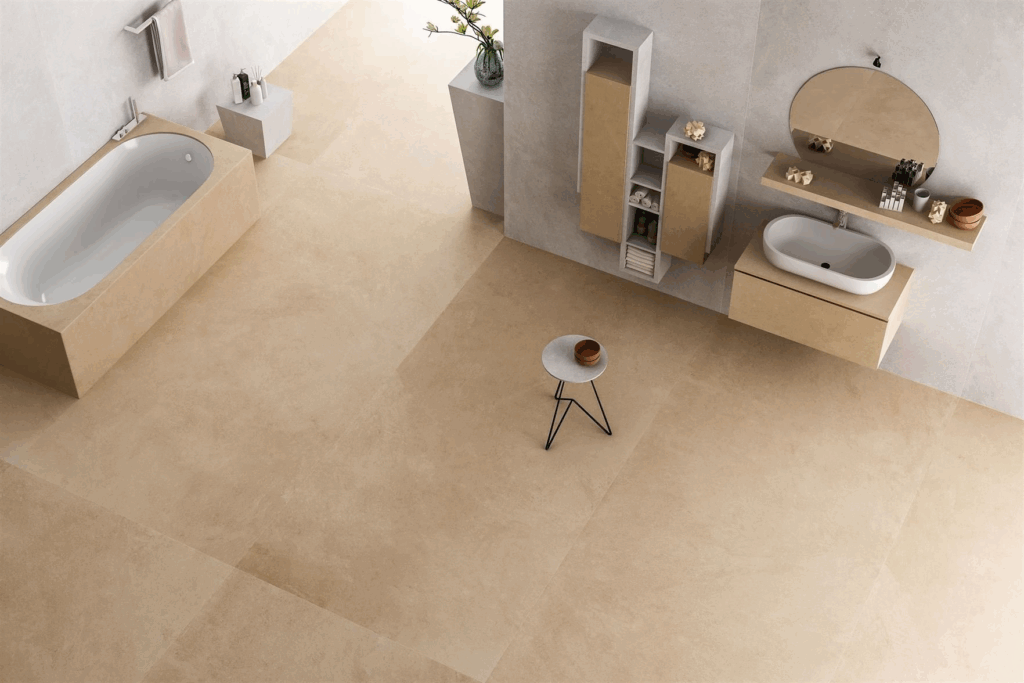
It may sound obvious, but regular cleaning is the foundation of lasting shine. Soap scum, hard water deposits, and everyday dust can quickly dull the surface of your tiles. To keep them in top shape, wipe down your bathroom tile at least once a week using a soft cloth or mop and a gentle, pH-neutral cleaner. Avoid abrasive pads or harsh scrubbers, especially if your tiles are glazed or have a high-gloss finish, as they can cause scratches.
Tip: Mix equal parts white vinegar and water in a spray bottle for a budget-friendly, eco-friendly cleaner. Spray it on, let it sit for a few minutes, and wipe clean.
2. Pay Attention to Grout Lines
Even the shiniest tile can look dull if the grout is dirty. Grout absorbs moisture and dirt, making it a breeding ground for mold and mildew. Use a small brush (an old toothbrush works well) and a baking soda paste or a commercial grout cleaner to scrub away discoloration. Try sealing your grout lines once a year to prevent moisture from seeping in and to make future cleaning easier.
Pro Tip: Dark-colored grout can hide stains better than white or light grout—but it still needs the same level of care.
- Dry After Use
Bathrooms are high-moisture zones, and that moisture can be tough on tile over time. After showers or baths, take a few seconds to dry your bathroom tile with a microfiber towel or squeegee. This simple habit helps prevent water spots, mildew, and mineral buildup—especially if you live in an area with hard water.
Bonus: Drying off your tiles also keeps your bathroom looking freshly cleaned with minimal effort.
- Avoid Harsh Chemicals
Some store-bought cleaners may promise fast results, but they can be too aggressive for certain types of tile. Acidic cleaners like bleach or ammonia can break down the finish of your tiles and erode grout over time. If you need to disinfect, opt for a diluted solution and make sure to rinse thoroughly with water afterward. Always check the manufacturer’s care guidelines for your specific tile material.
- Seal Natural Stone Tiles
If your bathroom tile is made of natural stone like marble, granite, or slate, sealing is essential. These materials are porous and can absorb water and stains more easily than ceramic or porcelain. A quality stone sealer creates an invisible barrier that protects against moisture, oil, and soap residue. Reapply every 1–2 years, depending on the product and usage.
- Watch for Early Signs of Damage
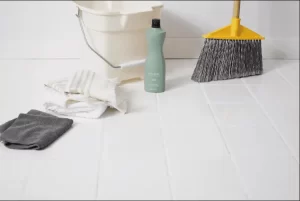 Don’t wait for a tile to crack or lift before addressing issues. Check periodically for signs of wear—like loose tiles, crumbling grout, or discoloration. Early intervention can save you from more expensive repairs later on. If you spot mold or mildew growth, treat it immediately to prevent it from spreading.
Don’t wait for a tile to crack or lift before addressing issues. Check periodically for signs of wear—like loose tiles, crumbling grout, or discoloration. Early intervention can save you from more expensive repairs later on. If you spot mold or mildew growth, treat it immediately to prevent it from spreading.
7. Use Mats and Rugs Strategically
Placing non-slip rugs or mats in high-traffic areas—such as in front of the sink or tub—can protect your bathroom tile from excessive wear and water exposure. Just make sure to clean under them regularly to avoid trapping moisture underneath.
- Ventilate Your Bathroom
Poor ventilation contributes to moisture buildup, which can dull tiles and damage grout. Always use a bathroom fan or open a window to help circulate air and dry surfaces faster. Good airflow not only preserves your tile’s shine but also keeps your bathroom feeling fresh and clean.
Keeping your bathroom tile clean, shiny, and durable doesn’t have to be complicated. With consistent upkeep and a few smart habits, you can protect your investment and enjoy a sparkling bathroom every day. Whether your tiles are brand new or a few years old, these simple tips can help maintain their beauty and extend their lifespan—making your bathroom a space you love to show off.
 Over time, tiles can accumulate dirt, grime, mold, and even soap scum. This not only makes them look unattractive but can also make your home feel less inviting. Regular tile cleaning helps to remove these unsightly buildups, allowing the natural colors and patterns of the tiles to shine through. It restores the original luster and brilliance of your surfaces, giving your home a fresher, more polished look.
Over time, tiles can accumulate dirt, grime, mold, and even soap scum. This not only makes them look unattractive but can also make your home feel less inviting. Regular tile cleaning helps to remove these unsightly buildups, allowing the natural colors and patterns of the tiles to shine through. It restores the original luster and brilliance of your surfaces, giving your home a fresher, more polished look.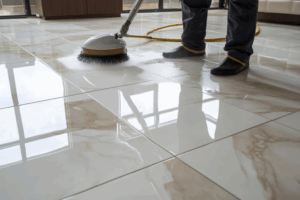 To make the most of your tile cleaning efforts, consider the following tips:
To make the most of your tile cleaning efforts, consider the following tips: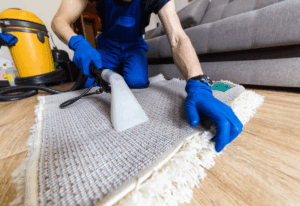 Carpets are cozy, comfortable, and visually appealing, but they can also become a breeding ground for unwanted particles. Everyday foot traffic brings in dirt, pet dander, pollen, and even mold spores. Over time, these elements settle deep within the carpet fibers, making them difficult to eliminate with standard household cleaning tools.
Carpets are cozy, comfortable, and visually appealing, but they can also become a breeding ground for unwanted particles. Everyday foot traffic brings in dirt, pet dander, pollen, and even mold spores. Over time, these elements settle deep within the carpet fibers, making them difficult to eliminate with standard household cleaning tools.